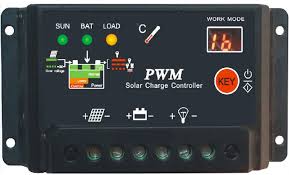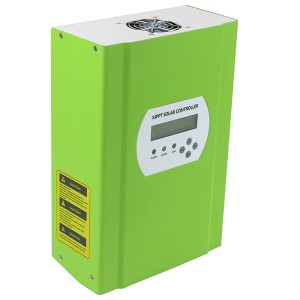MPPT v PWM Solar Charge Controllers
What’s the Difference?
The two types of charge controllers most commonly used in today’s solar power systems are pulse width modulation (PWM) and maximum power point tracking (MPPT). Both adjust charging rates depending on the battery’s charge level to allow charging closer to the battery’s maximum capacity as well as monitor battery temperature to prevent overheating.

► Comparing the Two
If maximizing charging capacity were the only factor considered when specifying a solar controller, everyone would use a MPPT controller. But the two technologies are different, each with it’s own advantages. The decision depends on site conditions, system components, size of array and load, and finally the cost for a particular solar power system.
► Temperature Conditions
An MPPT controller is better suited for colder conditions. As solar module operating temperature goes down, the Vmp1 increases. That’s because the voltage of the solar panels operating at their peak power point at Standard Testing Conditions (STC is 25C°) is about 17V while the battery voltage is about 13.5V. The MPPT controller is able to capture the excess module voltage to charge the batteries. As a result, a MPPT controller in cool conditions can produce up to 20 – 25% more charging than a PWM controller.
In comparison, a PWM controller is unable to capture excess voltage because the pulse width modulation technology charges at the same voltage as the battery. However, when solar panels are deployed in warm or hot climates, their Vmp decreases, and the peak power point operates at a voltage that is closer to the voltage of a 12V battery. There is no excess voltage to be transferred to the battery making the MPPT controller unnecessary and negating the advantage of an MPPT over a PWM.

► Array to Load Ratio
In a scenario where the solar array is large relative to the power draw from the batteries by the load, the batteries will stay close to a full state of charge. A PWM controller is capable of efficiently maintaining the system without the added expense of an MPPT controller.
► Size of the System
Low power systems are better suited to a PWM controller because:
- A PWM controller operates at a relatively constant harvesting efficiency regardless of the size of the array
- A PWM controller is less expensive that a MPPT, so is a more economical choice for a small system
- A MPPT controller is much less efficient in low power applications. Systems 170W or higher tickle the MPPT’s sweet spot
► Type of Solar Module
Stand-alone off-grid solar modules are typically 36-cell modules and are compatible with both PWM and MPPT technologies. Some grid-tie solar modules on the market today are not the traditional 36-cells modules that are used for off-grid power systems. For example, the voltage from a 60-cell 250W panel is too high for 12-Volt battery charging, and too low for 24-Volt battery charging. MPPT technology tracks the maximum power point (thus MPPT) of these less expensive grid-tie modules in order to charge the batteries, whereas PWM does not.
► Cost
MPPT controllers are typically more expensive than PWM’s but are more efficient under certain conditions, so they can produce more power with the same number of solar modules than a PWM controller. One must then analyze the site to verify that the MPPT can indeed perform more efficiently when used in that system’s given set of conditions.
When specifying one technology over the other, the cost of the controller becomes less important than the total cost of the system. To specify a controller technology simply based of cost, be sure to perform a close analysis of realized efficiencies, system operation, load and site conditions.
SUMMARY OF COMPARISON
| PWM Charge Controller | MPPT Charge Controller | |
| Array Voltage | PV array & battery voltages should match | PV array voltage can be higher than battery voltage |
| Battery Voltage | Operates at battery voltage so it performs well in warm temperatures and when the battery is almost full | Operates above battery voltage so it is can provide “boost” in cold temperatures and when the battery is low. |
| System Size | Typically recommended for use in smaller systems where MPPT benefits are minimal | ≈ 150W – 200W or higher to take advantage of MPPT benefits |
| Off-Grid or Grid-Tie | Must use off-grid PV modules typically with Vmp ≈ 17 to 18 Volts for every 12V nominal battery voltage | Enables the use of lower cost/grid-tie PV Modules helping bring down the overall PV system cost |
| Array Sizing Method | PV array sized in Amps (based on current produced when PV array is operating at battery voltage) | PV array sized in Watts (based on the Controller Max. Charging Current x Battery Voltage) |
________________________
1 The Vmp (maximum power voltage) is the voltage where the product of the output current and output voltage (amps * volts) is greatest and output power (watts = amps * volts) is maximized. Module wattage ratings (e.g. 100W, 205W) are based on Pmp (maximum power) at Vmp under standard test conditions (STC).
